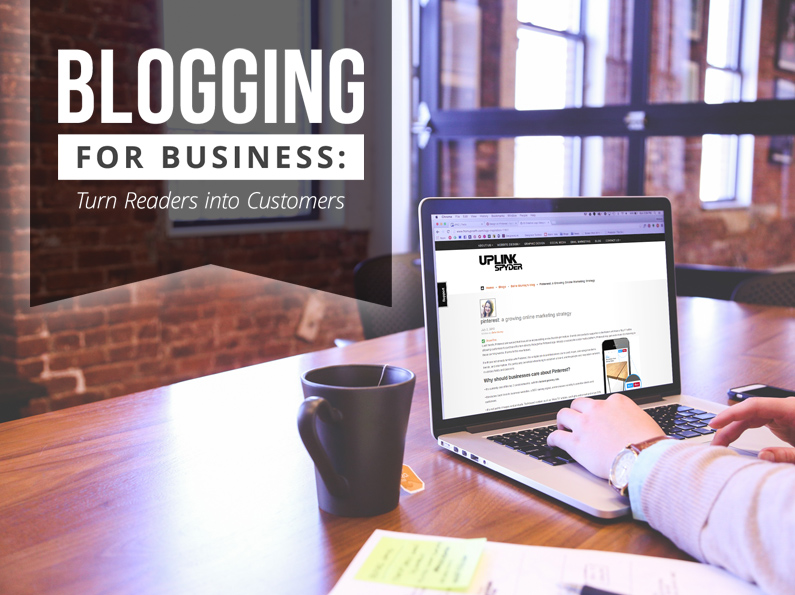
by Administrator | Sep 4, 2015 | Content Creation
Blogging for your business can be one of the most overlooked aspects of online marketing. On top of social media outreach, maintaining a website, and running a business, you may not see blogging as a priority. In reality, you are missing a lot of opportunities if (more…)
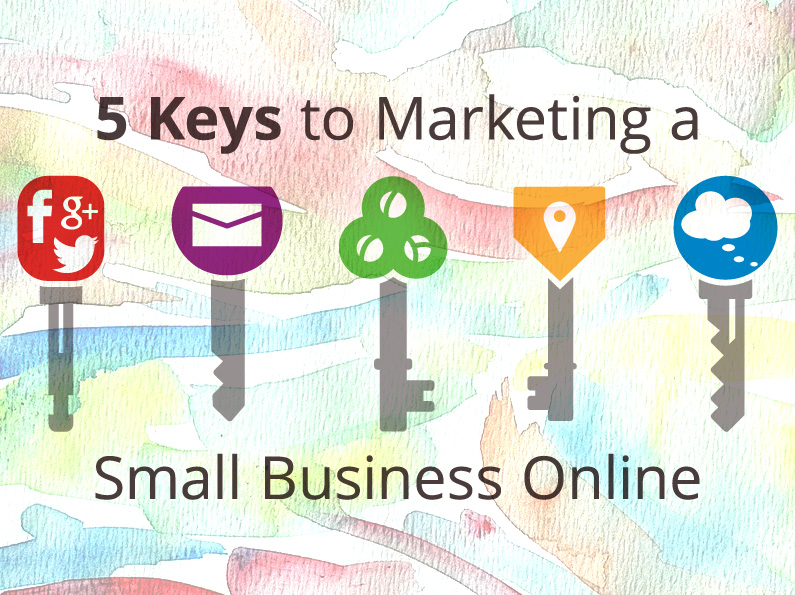
by Administrator | Jul 13, 2015 | Internet Marketing, Strategy
While you are juggling employees, sales, and the ongoing tasks of being a small business owner, online marketing can be placed low in priority. But don’t let it be! (more…)
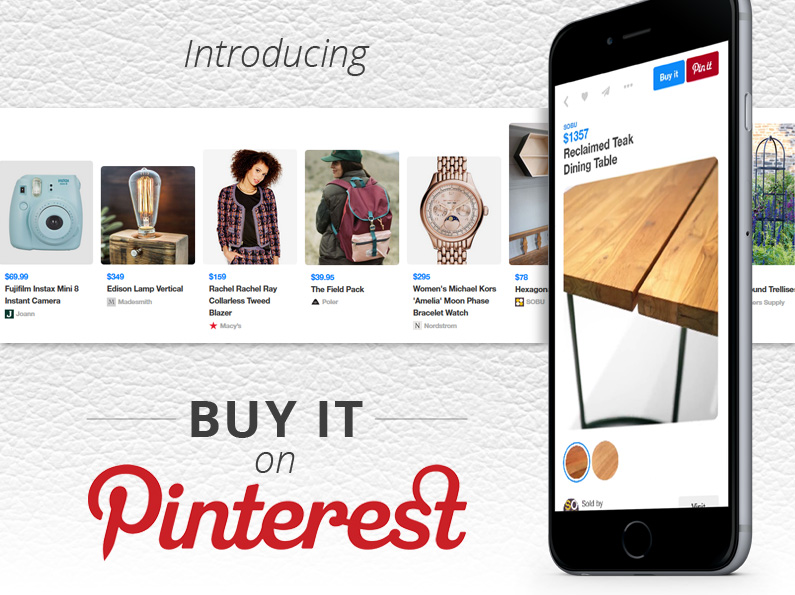
by Administrator | Jul 2, 2015 | Social Media
Pinterest recently announced that it would be incorporating a new Buyable pin feature. Brands and products supported by the feature will have a “Buy It” button, allowing customers to purchase the item directly through the Pinterest app. Already a successful social media platform, Pinterest may gain even more of a following in these coming weeks, thanks to this new feature.
For those not already familiar with Pinterest, it is a digital pin-board that allows you to post, re-pin, and categorize items, trends, and information. It’s particularly beneficial when trying to establish a brand, and the people and inspiration behind it, in various fields and passions.
Why should businesses care about Pinterest?
- It’s currently one of the top 3 social networks, with the fastest growing rate.
- It includes back links to business websites, a SEO ranking signal, and increases visibility to potential clients and customers.
- It’s not just for images and products. Text-based content, such as “How-To” articles, are highly welcomed and show 30% more engagement.
- Similar to Twitter’s “retweet” feature, Pinterest allows followers to “repin”, improving audience engagement and gaining exposure for your pins and your business.
Tips for Using Pinterest for Your Business
Connect your website to your Pinterest account. Make sure your website address is in your profile bio section, all pins link back to your business, and your website has a Pinterest link so customers can find your account quickly.
Follow the Pinterest Verification Process. This will not only help your business gain a trusting following, but will also allow you to see website traffic and analytics with a Business account.
Utilize keyword placement. Optimize all images with descriptive keywords to link to related content on your website. Place keywords towards the front of board names and pin descriptions.
Descriptions should be 200-310 characters long. Be clear and informative. Shoot for clarity rather than wit.
Include Calls to Action. Potential customers should have a clear path from your pin to your content and/or product.
Be consistent with your sharing strategy. 70% of pin clicks occur within the first 2 days. At least 5 pins per day is a good starting point.
Pin on Saturdays, afternoons, and evenings. Pin when your audience has a chance to sit down and browse.
Vary types of pins and board categories. Providing a range of material shows expertise and knowledge in your area. Include a board to showcase your newest or most popular products, services, and promos.
Visit UplinkSpyder’s profile on Pinterest.

by Deanna Rivera | Jun 5, 2015 | Content Creation
“I hate to write.”
“I’m not a good writer.”
“I don’t have time to write.”
Is this you? If so, then let me ask you this:
Could you use more website traffic? (Google still thinks content is king.)
Once there, would you like people to find something interesting and learn more about you?
In summary, would you like your business to grow?
If you answered “Yes!”, then suck it up and write anyway.
Writing is really important to online marketing success.
However, I don’t want you to walk away feeling frustrated, so let me give you a few pointers and tips for how to get over the hurdle and begin writing.
First, the What.
Your content does not have to be a book. A piece of content can be “Google ready” if it is 100 words long. You can write 100 words. This paragraph is practically 100 words.
Your content does not need to be epic. The goal is not to get 1 million hits. The goal is to allow your potential customer to get to know you before they commit to buying you or even visiting you. It’s about your brand: the total package of who you are and why what you offer is worth a shot.
Start by brainstorming ideas of what to write. Examples can include:
- Projects you worked on and why they were amazing (before/after)
- People/organizations you helped and how/why/when you helped them (case studies)
- Products/experiences/companies/information you find useful that relate to your business
- Experiences you’ve had that others might learn from
- Lists of stuff that is relevant to your business – for whatever reason, people love lists
- Events/news the average user of your business would find interesting written in your words (including why you find them interesting) with links to the source
- Lessons you have to share (like what I’m doing right now)
I also love it when businesses use content to improve their business. Ask your readers to give input about how you can grow your business.
“But I still stink at writing!”
OK, fine. If you just cannot write, talk. Get a voice recorder (your phone likely has one) and tell a story. Then have someone on your staff, your spouse, or your child transcribe the story. Edit. Voila.
Or Why Not Video?
Video is really the best content you can create and it does not have to be professional if you are just starting out. Get a camera. Point it at yourself. Or record yourself doing what you do. When you publish it, I would also transcribe it.
“But…some other reason I can’t write or talk or video”
Well, guess what? We love to write. We love to write about you and what you do. It’s our thing. Our sole existence in the world is to promote your business…to get to know you as if we were you and represent you. We do our thing, you do your thing, we both grow, win win.
We have written good content for just about every kind of business there is. Think of us as journalistic marketers.
And then there’s the How.
Now that you have content, what do you do with it?
I use a word at UplinkSpyder a lot: disseminate. I am pretty sure my staff hate that word.
It means to spread. Widely. Facebook about it. Tweet it. Take a photo, and pin or Instagram it. YouTube or Vimeo something related to it. Email people with it. Link it on LinkedIn. Send your physical customers to it and ask them for feedback. Ask all your employees to read it. Tell everyone you know about it.
Seriously. Pretend you just wrote that book you thought you’d have to write and the world will now know you crossed something off your bucket list.
And now do it again. And again. Don’t stop. That’s how the magic happens. *insert sparkles*
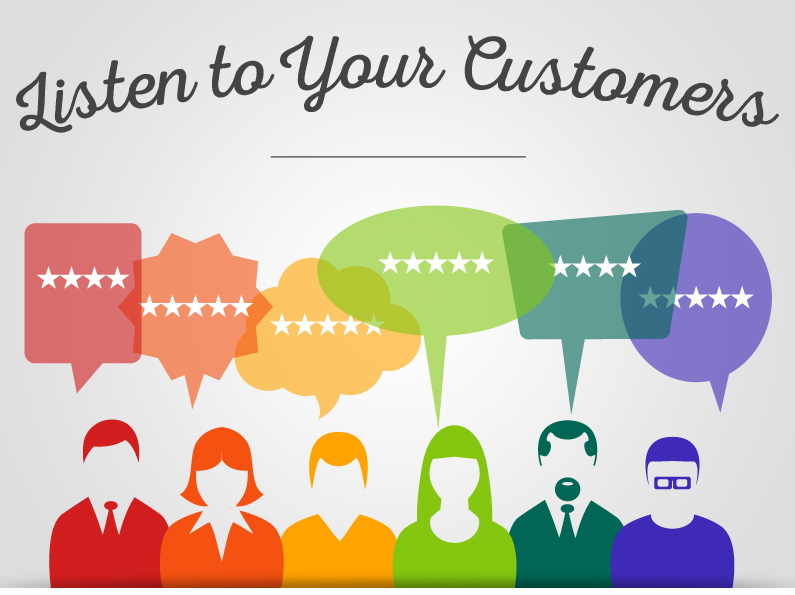
by Administrator | May 22, 2015 | Review Management
What are your customers saying about you? Every business has an online reputation or the potential for one. An online rep is based on many factors including physical and online appearances, efficiencies, and most importantly, the interactions between the business and its customers.
Online reviews can affect your visibility in search engines and directories. They increase your credibility, which creates an edge over your competitors leading to increased ROI and more success in your business.
Having a reputation is inevitable, but having a good one can and should be cultivated. One of the best ways to create a positive online reputation is by emphasizing the importance of reviews within the culture of your business. 88% of customers say they trust online reviews as much as personal recommendations; therefore, it’s an important aspect to any online marketing strategy.
Some Things to Know About Review Strategies
No reviews = bad reviews. Having no reviews leaves your reputation in a vulnerable state. One bad review will automatically set the tone for every other potential customer that visits your site. Without reviews, you do not have an established reputation, which may seem like a warning to visitors. A wide array of reviews is far better than no customer presence at all.
Positive reviews increase traffic online and on location. Positive reviews generate higher rankings in many online directories, which leads to higher traffic on your website and at your location.
Niche review sites are important. Sites like Google+, Yelp, Facebook, etc., are crucial for your online reputation, but you shouldn’t ignore the smaller niche sites. Finding a great niche site for your industry will improve your online presence.
Get the Most Out of Your Customer Reviews
Do not provide incentives for reviews. Providing an incentive to your customer in order for them to submit a review is generally not a good idea. Sites like Yelp and Google+ penalize businesses that do this, which is detrimental to your online reputation. It also cheapens the relationship between you and your customer. Encourage genuine reviews by providing great service.
Have a proactive response to bad reviews. Bad reviews should not be ignored. Follow up with the customer to resolve issues that arise. Contact them and inquire about more feedback to improve what they did not like about their experience with your business. After showing your concern, ask them if they would consider trying your business again and possibly revising the review. Even a small change could impact your online reputation in a positive way.
Use reviews to improve your business. Rather than just trying to get a good review, utilize all reviews, especially negative, to improve the experience or product for your customer. There is always room to improve.
Be persistent when asking for reviews, and make it known to your staff. Constantly asking for reviews improves the likelihood that your customers will take the time to give you feedback. Everyone involved with your business should be active in this area in order to optimize your chances of bringing in the most responses.
Reviews should not be a one-time pursuit. Your review strategy should be an ongoing process. An abundance of old reviews does nothing for your reputation if they are outdated. Maintain your review strategy in order to keep your business relevant.
UplinkSpyder can help you plan for, implement and manage, a high-quality review system. Let us help you; Contact Us today for a free consultation.
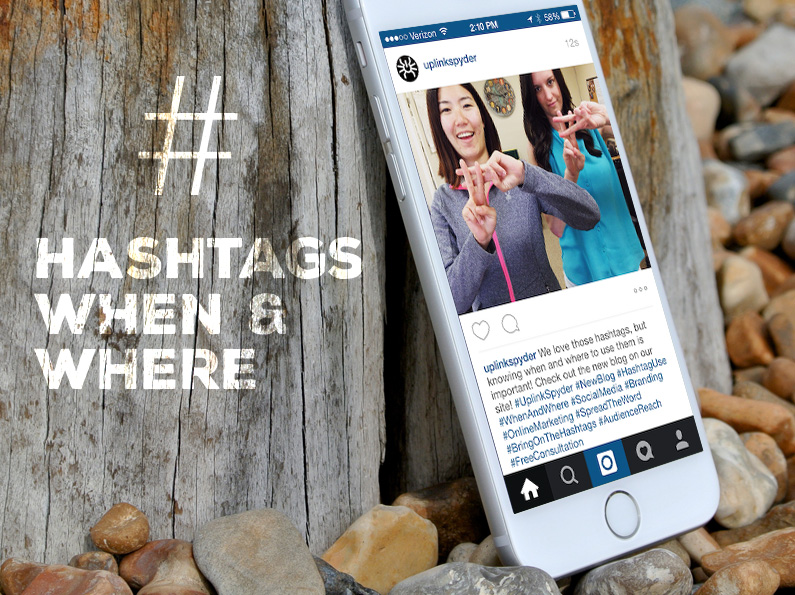
by Administrator | May 8, 2015 | Social Media
Since their origin on Twitter, hashtags have become popular on almost every social media platform including Facebook and Instagram. As a business owner, hashtag use can be a great marketing tool that can enhance your marketing campaigns when used correctly. Through hashtag association, your post and company can achieve far more reach and exposure. However, to be successful with hashtag use, you should know when to use them, when to avoid them, and when to use them in moderation.
Instagram
Instagram is all about the hashtags. Posts with 11 or more have shown the highest interaction with users. With Instagram, the more hashtags you use, the better. Here’s an example:
Twitter
1 or 2 hashtags per tweet is key. Tweets with hashtags get twice as much engagement than tweets without; however, when you have more than two, engagement drops 17%. Use hashtags on Twitter, but don’t go overboard.
A great way to incorporate hashtags on Twitter is posting during the days leading up to an event or live-tweeting the event itself. It gives your tweet relevancy and a great chance to reach a new audience.
Facebook
Facebook posts without hashtags seem to perform better than posts with them. Occasionally, hashtags help your posts build a community, but it’s rare and it’s usually better to leave your posts hashtag-free. Tags and mentions are far more successful.
Overall, your hashtags should be unique and/or relevant. You should try to make your hashtag memorable and specific to your brand, but also simple. Research it before publishing a post to make sure it won’t be misinterpreted as something else. Most importantly, your message should be easy to understand and provide a clear call-to-action for your viewers.
If you need help with hashtag use or social media in general, UplinkSpyder has you covered. Our team of social media experts understand the importance of online marketing and can increase the success of your business using educated strategies. Contact us today to start improving your brand.
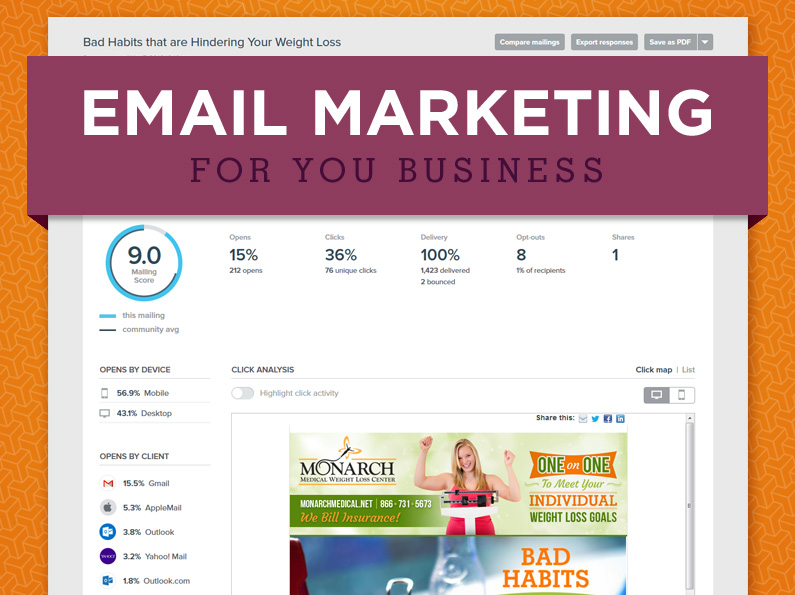
by Deanna Rivera | Apr 17, 2015 | Email Marketing
Email marketing is one of the best ways to nurture and maintain relationships with current and future customers. Most businesses overlook or under-utilize email marketing as a viable marketing tool. But email conversion rates are 40 times that of Facebook and Twitter.
When executed correctly as part of a strong marketing strategy, email marketing can have incredible results. Emails not only increase top of mind awareness and brand potency, but drive sales. Here are some of our favorite email marketing tips to get you started.
Begin and Grow Your List
It does no good to begin a campaign with no emails! But we often hear, “I haven’t been collecting emails.”
You may have more emails at your fingertips than you think. You can use any and all of the following to get started:
• People you email: Most email programs like Gmail and Outlook allow you to export your contacts in to an Excel list that you can trim. Don’t be afraid to include family and friends. Ask them to help you grow by sharing your emails.
• Client databases or files: Hire an intern or student to input email addresses from hard copy paperwork in to an excel list that can be imported in to your email database. Most contact databases like ACT and Salesforce will allow you to export emails, also.
• Organizations you belong to: Many membership organizations allow members to email each other their marketing information.
NOTE: It is very important that with your first email, you give these folks the option to “opt out”. Let them know you are beginning a campaign designed to add value to their lives and that their support is essential. However, if they’d like to opt out, that is available.
Now that you’ve begun, you need to immediately and continually grow your email list. The more “veins” you have feeding your list, the better. Here are a few options:
• Collect addresses at events. The best way to do this is to have a giveaway that requires an email to enter.
• Ask for addresses at retail counters or in waiting rooms. Having an iPad that folks can use to enter is a fun way to do this.
• Collect business cards at networking events and send each contact their first “awesome to meet you” email directly afterwards with an invitation to connect again.
• Have opportunities to sign up throughout your website and especially on high traffic pages. Make it easy (don’t ask a lot of questions.) Consider a pop up on your website; it will be hard to miss and is VERY effective.
• Staying involved in social media is helpful, especially when you link your email marketing to your social media accounts. Promote a signup link and share emails through your Facebook and Twitter accounts. Tell people an email is coming a few days ahead to create sign up urgency.
• Regularly ask current subscribers to share your emails.
• Offer exclusive content or discounts to email subscribers.
First Impressions Matter
When a customer gives you their email, they are telling you that they are interested in learning more about your business. It is important that you encourage this relationship by sending a welcome email. Welcome emails are opened 50% more than other emails, so don’t skip greeting new members of your email list! Subscribers that receive a welcome note show 33% more long-term brand engagement. Keep your customers by showing that you recognize their involvement.
Know Your Audience
Relevant emails drive 18 times more revenue than broadcast emails. When you send out a broadcast email, without any segmentation, the email loses some of its value to your readers. By sending relevant and useful content to a tailored audience, your readers will be more inclined to read because it appeals to their interest.
EXAMPLE: You own a store that sells to both business and residential clients. Don’t send business related content to residential customers. Instead, segment your campaign so that each person on your list ONLY receives information that is RELEVANT.
Using a strategy that includes automated emails will help ensure that your customers receive the information they want to know about consistently (and with the least amount of effort for you). Leads nurtured in this way make 47% larger purchases than non-nurtured leads.
Using personalized emails, i.e. including your client’s first name, also increases an email’s effectiveness. Personalized emails improve click through rates by 14% and conversion rates by 10%.
Attract Attention
Make sure that headlines are well thought out so your readers want to read more. Some email marketing programs even allow you to test subject lines before sending out the whole campaign.
Pay attention to the design of your template and the format of your email. Having an attractive and clear design that supports and promotes your brand is important.
Our brains process images 60,000 times faster than text so use relevant and interesting images to attract interest. If the image pops out to your reader, they are more likely to read the accompanying content.
Consider other options to enhance your email, such as a video or a slideshow. Adding video to email increases click rates by 300%. Your customers may be more inclined to watch a short video than read long paragraphs of body text. Many people are just more visual than others, and in this case, watching a video is simply more appealing.
Incorporating interesting facts or a humorous graphic can also be extremely helpful. People will share content to entertain and bring value to one another. If one of your customers found something you sent out to be particularly entertaining or thought provoking, they may forward it to others.
Recognizing detail is important. Details such as surrounding text with more whitespace can improve comprehension by 20%. Additionally, eye tracking data shows that viewers look to the same part of the screen where images of people are looking. Recognizing these photo placement strategies can help you place call-to-action buttons and other relevant information in the best possible place for engagement.
Timing is Everything
58% of adults check email first thing in the morning, so it’s a good idea to send out your emails early in the day.
In addition to time, the day of the week is also important. Mid-week is usually an effective time, and you want to avoid Mondays and Fridays. Most email marketing programs allow you to schedule your emails and newsletters at the best time to ensure optimal viewing.
Analyze data from previously sent emails, such as how many people received, opened, and clicked through your emails, what time they read it and where they clicked. This will help you better decide how to improve your results and make your emails more successful in the future.
Make It Mobile Friendly
51% of emails are opened on a mobile device, so there is a good chance your email will be passed up if it isn’t fully viewable or looks funny on a phone or tablet. People check their mobile phone up to 150 times a day which means they are checking their email more often than ever before! Make sure your email is formatted correctly for the smallest of screens.
When creating things like a clickable button, it’s helpful to remember that the human fingertip is 46 pixels. Make sure everything is sized accordingly to provide efficiency and minimize frustration for your customer.
The subject line is also important for mobile formatting. IPhones will cut off a subject line over 32 characters, which is important to keep in mind when deciding on an interesting title for your email.
Additionally, make sure your business is following the rules and regulations pertaining to the CAN-SPAM Act.
Do you want to begin email marketing, but feel overwhelmed on how to begin? UplinkSpyder provides email marketing strategy, support, and full campaign management. Let us help you use our experience to create and administer an amazing campaign for your organization.
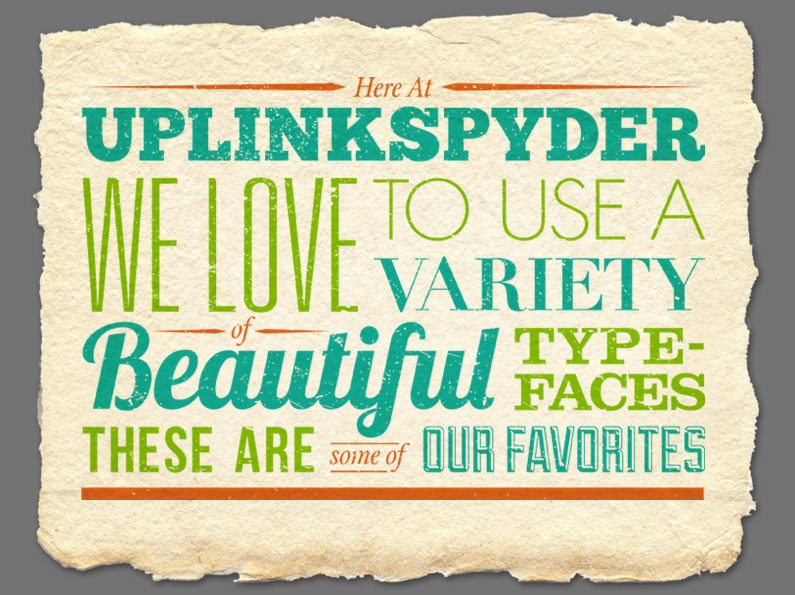
by Aaron Moore | Dec 27, 2014 | Graphic Design
The Importance of Typeface Choice
There are hundreds of thousands of typefaces floating around the web, and new fonts are crafted every day. Typefaces range from standard serif like the well known “Times New Roman” to an even more frequently used sans-serif like “Helvetica,” to script typeface, which resembles cursive handwriting.
In some cases, styling distracts from what is being said or limits readability. One thing is for sure, each tells a unique story. Aside from color palette or images used, a font can really set the mood for a reader.
At UplinkSpyder we love to have fun with design while maintaining readability and an appropriate setting for the message. Many of our favorite fonts are fairly versatile and present vastly different types of content in an effective way.
For any given organization and graphic design, not all fonts fit the bill. You wouldn’t want to use a dainty script on a hunting website where a rugged slab-serif would better suit the audience. It is important to choose the appropriate font because words can be saying one thing and the font choice can make the reader feel something very different.
Branding
Once you have the set of fonts that express the feeling and message you want, along with colors and a logo, you have the visual representation of your brand.
Once your brand is established and you want your website to reflect that brand, it can get a little tricky. Although web development possibilities grow constantly, it is still difficult to use some fonts organically on a website.
Nothing on the web is as easily manipulated as it is on a poster, but there are sneaky ways of getting the right feeling through use of your chosen fonts in website graphics. Headers, backgrounds, slideshow images, buttons, and other graphics can use any font and styling since they are created in graphic design programs.
When you integrate your brand in this way, you can choose a web-safe font to present content and still set the right tone & mood.
by Administrator | Dec 19, 2014 | Marketing, Strategy
The Christmas shopping season is one of the busiest and most important times of the year both for our clients and our company. In order to get the most out of consumers’ expanded need to make purchases this time of the year, retailers and marketers need compelling holiday campaigns across multiple channels. The same strategies apply throughout the year as other holidays and opportunities arrive. Other seasons and celebrations can be equally if not more important to you and your business and unlike Christmas, may not have as much competition for your consumer’s attention. The following helpful tips and strategies should be considered when creating any marketing campaign around a specific season or celebration.
Plan Ahead: Don’t start planning your marketing strategies days or even a few weeks before certain holidays. Planning your holiday campaigns a few months in advance will give you time to adjust to any changes and won’t have you throwing rushed, low-quality campaigns together at the last minute. Create a schedule and include specific weekly and daily tasks for each channel. Create assignments for people in your organization.
Be Creative and Generous: Use your creativity and the various channels at your disposal. A few ideas we’ve had success with include:
- Run a Facebook exclusive promotion that you only post and promote on your Facebook page for your fans.
- Use Pinterest or Twitter to run a re-pinning or re-tweeting contest for your followers.
- Send out weekly or daily newsletters counting down to the big day that include a deal in each.
- Offer larger promotions specific to well-known shopping days like Black Friday, Small Business Saturday and Cyber Monday.
- Create a “Last Minute Gift” promotion closer to Christmas. Most people shop online now, so offer promotional codes and make sure these codes are working before sending them out to your audience.
Engage Your Audience: Make your customers and fans feel special. Ask them via Facebook or Twitter what products they want or would like to see more of for the holidays. Use unique hashtags for them to use to interact with you. Consider running a photo contest or a “Caption This Photo” contest and have them submit their own photos or sayings. This makes them feel special, but more importantly it keeps them coming back to your page.
Show You Care: Show your customers and fans that you are a considerate and philanthropic company. You can start by partnering with a local charity or non-profit organization. Host a donation drive or volunteer at a charity event that benefits this organization. Helping those in need shows your audience you care about more than just sales.
Be Festive! Your clients are showing their spirit, so why shouldn’t you? Create festive graphics to utilize across all channels, including your website. Decorate your place of business and post photos of the décor and your happy helpers (employees). In the midst of all the promotions you are running, your audience will appreciate the occasional “fun” post or photo. It is also smart to create a special newsletter to send out. Something as simple as “Happy Holidays from All of Us” or “We are Thankful for You” shows that you appreciate their patronage.
Hopefully these tips will help you get an idea for a successful holiday campaign. Start planning your marketing strategy for the next holiday, celebration, or season using engaging and creative campaigns that will excite your audience and give you more brand awareness and sales.
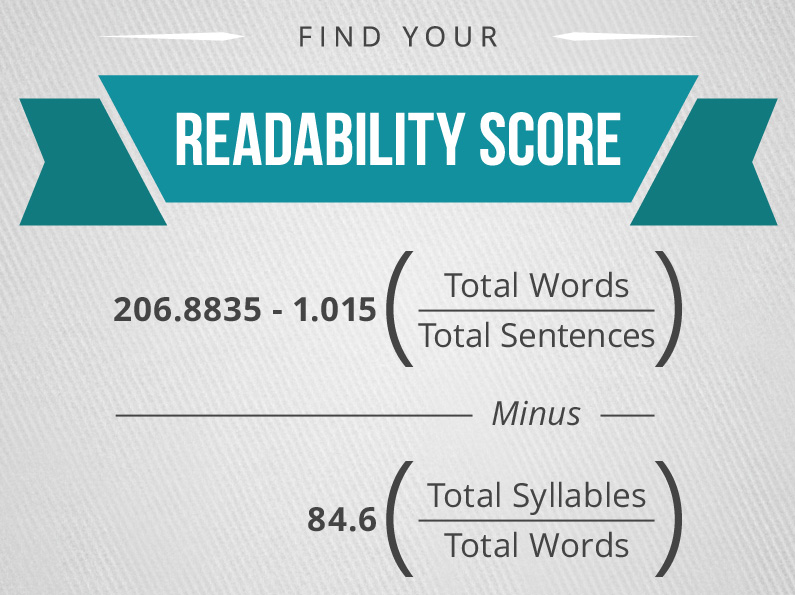
by Deanna Rivera | Jan 3, 2014 | Content Creation, Search Engine Optimization
If you are spending time writing a blog or a page for your website, you want to make sure that people actually read it and that you get the most out of it where search engines are concerned. With that in mind, please consider the following.
Readability
The math equation in the graphic below may have already sent you running scared from this blog. But if you want to know whether your blog will actually be read by most users of your website, pay attention. Luckily, if you have MS Word, you don’t have to do any math (look at the bottom of this blog for instructions.)
The math equation is called the Flesch-Kincaid Readability Score and it ensures you are writing in plain, understandable English. It’s important when writing for the web because psychologically speaking, people don’t want to do as much mental work reading your website as when reading a novel or newspaper.
In other words, keep it simple and they might stick around longer.
Readability Part 2
- Use white space, bullets, numbering, and good punctuation.
- Keep your sentences and paragraphs short.
- Use appropriate jargon. For instance, since ours is a technology related site, I could feel safe referring to search engine optimization or readability scores.
Search Engine Optimization
You really should leave Search Engine Optimization for the most part to your experts (hey, that’s us!) but when writing content, here are a few things anyone should do:
- Web crawlers can’t read images so tell them what the image is and include at least one keyword.
- Your title is the first thing the search engines read, so think about it and put a keyword or two in there, also.
- The same keywords in your picture and title should also be in your text.
For instance, for this article, my title keyword is website content and my image keyword is website readability. Hey look, those keywords are now in my blog a couple times. Yay me.
Figuring your Flesch-Kincaid Readability Score
Just in case the math equation still scares you and you don’t have MS Word, here’s a simple way to figure your score:
- Multiply the average sentence length by 1.015
- Multiply the average word length by 84.6
- Add the two numbers
- Subtract that total from 206.835
You want your score to be somewhere between 60-70 generally. 0-30 is WAY too high level for the average blog. 90-100 is probably too simplistic.
Here’s how you figure your score in MS Word:
- Go to Word Options
- Choose Proofing
- Ensure that the grammar with spelling box is checked
- Select the tick box for “Show readability statistics.”
Just in case you were wondering, the readability score of this blog is 66.3. Nailed it.










